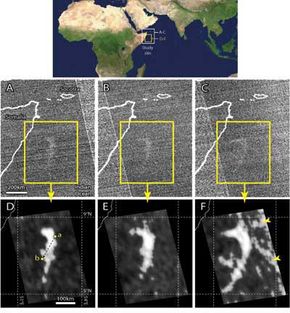Why Animals Make Light
Scientists don't know why all bioluminescent forms of life glow. For example, several earthworm species create a luminescent secretion that doesn't have an obvious purpose. The reason for some mushrooms' glow is also unclear, although some scientists theorize that it attracts insects that spread the mushrooms' spores. A few animals light up when nearby animals start to glow, and there's not always a clear reason for this behavior.
This uncertainty exists in the ocean as well as on land. Some species of single-celled plankton called dinoflagellates glow when disturbed. Tides, storms, swimming marine life and passing ships can cause large numbers of these plankton to produce light simultaneously. Dinoflagellates are responsible for the phenomenon known as the milky sea, which causes the ocean to glow. In some cases, this glow is so bright that it interferes with marine navigation.
Advertisement
The burglar-alarm theory is a possible explanation for how this response to disturbance helps the plankton survive. If a small fish begins to feed on the plankton, the disturbed plankton emit a flash of light. The light attracts larger fish, which are likely to be the smaller fish's predators. In other words, the flash of light is an alarm that warns nearby big animals of the presence of little animals. However, this system doesn't seem to be as foolproof as some of the better-understood uses for bioluminescence.
Here's a rundown of some of the primary uses for bioluminescence on land and at sea:
- Communication: Fireflies flash at one another in a species-specific pattern, often in order to find a mate.
- Locating food: In the twilight depths of the ocean, some fish species use their light like a spotlight to find prey.
- Attracting prey: Some species, like the angler fish, use a luminescent lure to attract other fish.
- Camouflage: In the darker parts of the ocean, it's hard to see anything below you, but it's easy to see the silhouette of what's above you. For this reason, some species produce spots of light on their undersides, which blur their outlines and allow them to blend in with the light from above. This is also known as counter-illumination.
- Mimicry: The cookie-cutter shark has one unlit patch on its underside, which resembles a smaller fish when viewed from below. When a large predator approaches, the shark can take a large bite and then flee. This allows the cookie-cutter shark to prey on animals that are much larger and more powerful than it is.
- Self-defense: When threatened, some animals release a cloud of bioluminescent fluid, similar to the way squid defend themselves with a cloud of ink. Others use a bright flash to blind predators.
In addition to having lots of different uses for light, bioluminescent organisms combine lots of different substances to make light. We'll look at the basics of the process in the next section.
